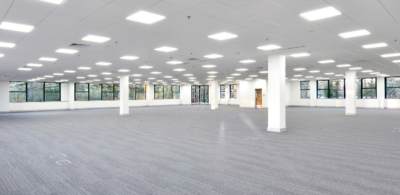Every tenant has a list of non-negotiable features and amenities that apply when looking for new space. As markets evolve and paradigms shift, those lists grow with them. While things like climbing walls and saunas were just flashes in the pan, a few recent developments have stuck around and proven their worth. Onsite gyms will almost certainly remain in one capacity or another and the more electric cars that hit the roads, the more common charging spaces in garages will become. Perhaps the single biggest shift has been the availability of high-capacity broadband Internet and wireless connections. Sharing data across the office and across the country is now done by fiber optic cable and that’s not going to change in the foreseeable future.
Plus: Green roofs bring nature back to the urban jungle | CRE is connecting with the future
Modern businesses stumble when Internet connections become sporadic or fail. Everything from retail point of sale to contract administration requires reliable high speed Internet. Never has the expression “time is money” been more appropriate. At best productivity slows, while at other times there may be no reason for employees to be onsite without being plugged in. Complicating matters, weak Wi-Fi can be more than frustrating. Ethernet ports are not included by default on many devices anymore, and mobility is a big deal in collaborative environments. A lot of variables go into making sure a building is up to the task of providing adequate communication infrastructure, many of which are out of the grasp of the layman. WiredScore is hoping this ambiguity will drive the market towards their simple rating system.
Also: Four essentials for collaboration and innovation | Will technology replace commercial real estate brokerage?
Based in New York and a recent entrant to the Chicago market, WiredScore offers “Wired Certification” for buildings, much the same way the USGBC provides LEED categorizations. Google and Cisco helped create the evaluation criteria, which distills multiple layers of communication infrastructure into an easy-to-understand grade. Although buildings built since approximately 2000 have been able to easily adapt to today’s data demands, older assets sometimes face difficulties thanks to closed off floor plans or bottleneck cable runs. With WiredScore, prospective tenants can alleviate some of the headache in determining if new spaces can meet their technology needs.
Currently spreading through New York, Chicago, and a few other select areas, the certification has the potential to become a nationally recognized standard. However, it is worth noting that large-scale adoption could hinder some assets. As with any ranking system, some candidates will build to the standard. This could lead to underperforming buildings with high rankings or, provided WiredScore takes gaming the system seriously, a push among competing spaces to spend their way into better outfitted buildings. Not strictly a drawback, it is another expense owners will need to consider when planning how future vacancies will be used and, equally importantly, viewed in the marketplace.
Whether or not a new certification system defines building connectivity in the 21st century, data will remain a key driver in modern business operations. Bandwidth demand is only poised to increase, and prospective tenants will want some sort of assurance that wherever they sign can meet or exceed that demand.
A mentor, a real estate executive and a mom, Karen spends time all over the map. If she isn’t traveling, Karen is busy with everything from IREM to Virginia Tech’s Real Estate program. When she has a few minutes to spare, she considers it a personal mission to find new homes for all of Lucky Dog Animal Rescue’s four-legged companions.

 Karen Whitt
Karen Whitt

 Aaron Jodka
Aaron Jodka
 Amber Merrigan
Amber Merrigan
 Andrew Steele
Andrew Steele